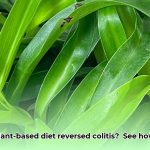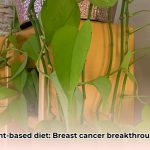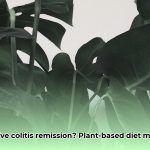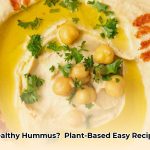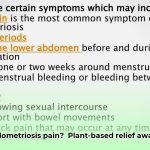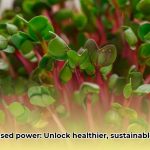Want to unlock your peak running performance and stay injury-free? Mastering inflammation is key. This comprehensive guide reveals the best anti-inflammatory foods to fuel your runs, conquer recovery, and achieve lasting well-being. Discover actionable strategies to build a powerful, personalized anti-inflammatory diet that will transform your running. For more anti-inflammatory food ideas, check out this helpful resource.
Decoding Inflammation: How It Impacts Your Running
Running, while rewarding, places significant demands on your body, triggering inflammation as a natural response to the stress of exercise. While acute inflammation is essential for muscle repair and adaptation after a run, chronic inflammation, a persistent, low-level inflammatory state, can sabotage your recovery, increase your risk of injury, and ultimately hinder your performance. Understanding this crucial distinction is the first step to optimizing your diet.
Power Up Your Plate: The Top Anti-Inflammatory Foods for Runners
To maintain peak running form and protect yourself from the negative effects of chronic inflammation, strategically incorporate these powerful anti-inflammatory foods into your daily diet:
- Berries: Nature’s Antioxidant Powerhouses: Blueberries, strawberries, raspberries, and blackberries are bursting with antioxidants, including anthocyanins, which combat oxidative stress and neutralize harmful free radicals produced during intense training. These vibrant berries help protect your body’s cells from damage and promote faster recovery.
- Leafy Greens: Vitamin and Mineral Goldmines: Spinach, kale, collard greens, and other dark leafy greens are packed with essential vitamins (A, C, E, and K), minerals (magnesium, potassium, and iron), and antioxidants that support overall health and effectively mitigate inflammatory responses.
- Fatty Fish: Omega-3 Rich Recovery Fuel: Wild salmon, mackerel, tuna, sardines, and anchovies are abundant in omega-3 fatty acids, particularly EPA and DHA, which are known for their potent anti-inflammatory benefits. Omega-3s help regulate inflammatory pathways, reduce muscle soreness, and balance the impact of intense training. Aim for at least two servings per week.
- Turmeric: The Curcumin Champion: This vibrant yellow spice contains curcumin, a powerful polyphenol renowned for its exceptional anti-inflammatory and antioxidant properties. Curcumin targets multiple inflammatory pathways in the body, helping to reduce pain, inflammation, and muscle damage. Boost its absorption by combining it with black pepper.
- Ginger: A Natural Anti-Inflammatory Aid: This potent spice contains bioactive compounds called gingerols, which exhibit anti-inflammatory and antioxidant effects. Research suggests ginger may help alleviate muscle pain and soreness. Incorporate fresh ginger into your smoothies, teas, or stir-fries for a natural boost.
- Nuts and Seeds: Healthy Fat and Fiber Boosters: Almonds, walnuts, chia seeds, flaxseeds, pumpkin seeds, and hemp seeds offer a winning combination of healthy fats, fiber, vitamins, minerals, and antioxidants. These nutritional powerhouses help reduce inflammation, support heart health, and provide sustained energy for your runs.
- Olive Oil (Extra Virgin): Liquid Gold for Inflammation: This kitchen staple contains monounsaturated fats, particularly oleic acid, and potent antioxidant polyphenols like oleocanthal, which has anti-inflammatory activity similar to ibuprofen. Use extra virgin olive oil for salad dressings and low-to-medium heat cooking to preserve its beneficial compounds.
- Tart Cherry Juice: Recovery in a Glass: A concentrated source of anthocyanins, tart cherry juice has been shown to effectively reduce exercise-induced muscle damage (EIMD), inflammation markers, and muscle soreness, leading to faster recovery. Consider drinking it for several days leading up to and following intense exercise or competition.
- Cruciferous Vegetables: Detoxifying and Anti-Inflammatory: Broccoli, cabbage, Brussels sprouts, cauliflower, and other cruciferous vegetables are characterized by their unique sulfur-containing compounds, such as sulforaphane and isothiocyanates. These compounds exhibit significant anti-inflammatory and antioxidant properties and play a role in detoxification pathways.
- Avocado: A Creamy Source of Healthy Fats: Rich in heart-healthy monounsaturated fats, avocados also supply antioxidants like carotenoids and tocopherols (Vitamin E), along with potassium and magnesium, contributing to overall health and inflammation management.
Crafting Your Personalized Anti-Inflammatory Diet: A Runner’s Blueprint
Building an effective anti-inflammatory eating plan involves a few actionable steps to ensure sustained benefits, optimal recovery, and consistent performance gains. It’s about creating a lifestyle, not just following a temporary diet.
- Assess Your Current Diet: Identify the Gaps and Opportunities: Take a close look at your current eating habits. Are you regularly consuming the anti-inflammatory foods listed above? Are there areas where you can reduce processed foods, sugary drinks, and unhealthy fats? Awareness is the first step to change.
- Gradually Incorporate New Foods: Build Sustainable Habits: Don’t try to overhaul your entire diet overnight. Instead, focus on gradually adding one or two new anti-inflammatory foods to your meals and snacks each week. This approach makes the changes more sustainable and allows your body to adjust.
- Experiment with Timing: Find What Works Best for You: Pay attention to how your body responds to different foods at different times. Do you feel better eating a handful of berries before a run or after? Does a post-run smoothie with turmeric and ginger help reduce muscle soreness? There’s no one-size-fits-all answer.
- Listen to Your Body: Become Your Own Expert: Your body is your best guide. Monitor how different foods affect your energy levels, digestion, and recovery. If you experience any discomfort or negative side effects, adjust your eating plan accordingly.
- Hydrate Consistently: The Foundation of Performance: Water is essential for flushing out toxins, reducing inflammation, and ensuring the body runs smoothly. Aim to drink plenty of water throughout the day, especially before, during, and after your runs.
- Minimize Pro-Inflammatory Foods: Reduce the Fire Within: While focusing on anti-inflammatory foods is essential, it’s equally important to minimize or eliminate pro-inflammatory foods, such as processed foods, sugary drinks, refined carbohydrates, excessive alcohol, and unhealthy fats (saturated and trans fats).
- Seek Professional Guidance (Optional): Personalized Support for Your Goals: A registered dietitian or sports nutritionist can provide personalized guidance based on your individual training schedule, health history, and goals. They can help you create a customized anti-inflammatory eating plan that optimizes your performance and overall well-being.
Strategic Timing: Maximizing Recovery and Performance
Strategically timing the intake of anti-inflammatory foods can significantly enhance runner recovery, injury prevention, and performance.
- Pre-Run Fuel: Choose easily digestible anti-inflammatory foods that provide sustained energy without causing digestive distress. Examples include a banana with almond butter, a small bowl of oatmeal with berries, or a smoothie with spinach and fruit.
- Post-Run Recovery: Focus on replenishing glycogen stores and reducing inflammation. A post-run meal or snack should include a combination of carbohydrates, protein, and anti-inflammatory foods. Examples include grilled salmon with roasted vegetables, a protein smoothie with tart cherry juice, or a quinoa bowl with avocado and black beans.
- Consistent Daily Intake: While strategic timing can be beneficial, the most important factor is consistent daily intake of anti-inflammatory foods. Aim to incorporate these foods into every meal and snack to maintain a steady state of reduced inflammation.
Training Phase Strategies: Adapting Your Diet for Peak Performance
Adapting your dietary strategies based on training intensity and individual needs is essential for managing inflammation effectively and optimizing performance throughout your training cycle.
- Base Training: Focus on building a solid foundation of anti-inflammatory eating habits. Prioritize whole, unprocessed foods, including plenty of fruits, vegetables, healthy fats, and lean protein.
- High-Intensity Training: Increase your intake of antioxidant-rich foods, such as berries, leafy greens, and tart cherry juice, to combat the increased oxidative stress associated with intense workouts.
- Race Week: Focus on easily digestible foods to avoid any digestive issues on race day. Consider reducing your intake of high-fiber foods in the days leading up to the race.
Injury Prevention and Recovery: A Dietary Defense
Long-distance running can lead to both beneficial and harmful inflammation. A strategic approach requires balancing nutrition and recovery. Since diet significantly impacts inflammation levels, anti-inflammatory foods can improve recovery and performance.
- Early Intervention: If you experience an injury, immediately increase your intake of anti-inflammatory foods and consider supplementing with curcumin or omega-3 fatty acids.
- Consult a Professional: Consulting a registered dietitian or sports nutritionist can provide personalized guidance and help you develop a tailored eating plan to support your recovery.
By understanding the role of inflammation in running and incorporating these powerful anti-inflammatory foods into your diet, you can unlock your peak performance, accelerate your recovery, and stay injury-free for years to come. Remember, consistency is key, and small changes can make a big difference in your running journey.
- Plant-based Diet Colitis Remission: Success Stories - December 18, 2025
- Plant Based Diet Breast Cancer: Research-Based Benefits - December 16, 2025
- Plant-Based Diet Ulcerative Colitis Remission: Proven Benefits - December 15, 2025

